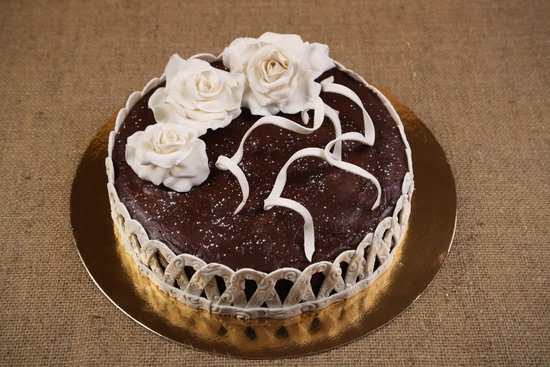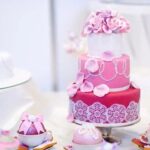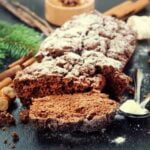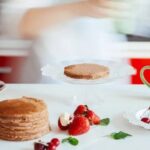Simple cake decorating ideas with icing can transform any ordinary cake into a masterpiece. From birthday parties to weddings, the art of cake decorating has become an essential skill for anyone who wants to impress their guests with visually stunning and delectable treats. Whether you are a beginner or an experienced baker, learning simple techniques and harnessing your creativity with icing can elevate your cakes to new heights.
In this article, we will explore the wonderful world of cake decorating with icing. We will provide you with step-by-step instructions, tips, and tricks to create beautiful designs that will leave everyone in awe. From basic techniques to showstopper designs, theme-inspired cakes to edible art, and elegant minimalism to professional secrets, we have everything you need to unleash your inner cake artist.
So gather your tools and materials because we are about to dive into the magical realm of cake decoration with icing. Whether you dream of creating intricate designs or prefer a more minimalist approach, there is something for everyone in this guide. Get ready to amaze your friends and family with stunning creations that are not only pleasing to the eye but also deliciously tempting. Let’s begin our journey into the artistry of simple cake decorating ideas with icing.
Getting Started
When it comes to cake decorating with icing, having the right tools and materials is essential for achieving professional-looking results. Here are some of the must-have items that every cake decorator should have in their toolbox:
- Piping Bags: These are indispensable for creating intricate designs with icing. Look for reusable piping bags made of food-grade plastic or cloth for durability.
- Piping Tips: A variety of different tips will allow you to create a wide range of designs, from basic borders to intricate flowers. Start with a few basic tips like round, star, and petal shapes, and gradually add to your collection as you gain more experience.
- Offset Spatula: This tool is perfect for spreading icing evenly on the surface of cakes and creating smooth finishes. The angled blade allows for easy maneuvering around the corners and edges.
- Turntable: A turntable makes it much easier to decorate a cake by allowing you to rotate it while you work. Look for one that is sturdy and can support the weight of your cakes.
- Bench Scraper: This handy tool helps in creating sharp edges on cakes, smoothing sides, and removing excess frosting from the turntable.
- Cake Leveler: For perfectly even layers, invest in a cake leveler. This tool helps in slicing through the top of the cake to create a flat surface before layering on icing or other decorations.
- Gel Food Coloring: Gel-based food coloring creates vibrant colors without affecting the consistency of the icing. It’s best to start with primary colors (red, blue, yellow) and mix them to create any shade you desire.
- Flower Nail Set: If you’re planning on making delicate floral designs using royal icing or buttercream, investing in a flower nail set will make your job much easier. These metal nails provide a stable base while piping petals or flowers.
- Offset Palette Knife: This knife is ideal for blending colors, creating texture, and adding artistic touches to your cake designs. It has a flexible stainless steel blade that allows for precise control.
- Fondant Smoother: If you choose to work with fondant or gum paste, a fondant smoother will help you achieve a flawless finish on your cake. The smooth surfaces ensure that the fondant adheres smoothly and evenly.
Having these essential tools and materials on hand will set you up for success in your cake decorating endeavors. Remember, practice makes perfect, so don’t be afraid to experiment and let your creativity shine through.
Basic Techniques
Understanding Different Types of Icing
Before diving into cake decorating with icing, it’s important to understand the different types of icing that are commonly used. The most popular options include buttercream icing, royal icing, fondant, and ganache. Each type has its own unique texture, taste, and application method.
- Buttercream icing is smooth and creamy, making it ideal for both spreading and piping. It can be flavored in various ways and allows for easy color customization.
- Royal icing is a mixture of egg whites or meringue powder, powdered sugar, and water. It dries into a stiff consistency and is often used for intricate designs like piping flowers or creating decorative borders.
- Fondant is a sugary paste that can be rolled out and draped over cakes to create a smooth finish. It can also be molded into shapes or used for intricate details. Fondant provides a sleek and professional look.
- Ganache is made from chocolate and cream, resulting in a glossy finish when poured over cakes. It can also be whipped to create a more spreadable consistency.
Piping Techniques for Cake Decoration
Piping is one of the fundamental techniques in cake decorating with icing. It involves using a piping bag fitted with different tips to create various shapes and designs on the cake’s surface. There are several common piping techniques that beginners should start with:
- A simple way to start is by practicing creating borders using round tips. Hold the piping bag at a 45-degree angle to the cake’s surface and apply pressure consistently while moving your hand steadily.
- To pipe stars or rosettes, use a star tip nozzle. Begin at the center of the design and swirl the tip around in an outward motion while applying steady pressure.
- For writing or adding personalized messages on cakes, use a small round tip nozzle or a specialty script tip. Practice your lettering on parchment paper before attempting it directly on the cake.
Spatula Techniques for Cake Decoration
Aside from piping, using a spatula to apply icing is another basic technique that can yield beautiful results. Here are some essential spatula techniques to learn:
- Crumb coating: This technique involves applying a thin layer of icing all over the cake to seal in the crumbs and create a smooth surface for further decoration. Use a bench scraper or straight-edged spatula held at a 45-degree angle to spread the icing evenly.
- Smooth frosting: To achieve smooth and even layers of icing, hold the spatula parallel to the cake while spinning the turntable slowly. Apply gentle pressure and make sure each stroke overlaps slightly with the previous one.
- Textured effects: If you want to create interesting textures or patterns on your cake, experiment with techniques like feathering or stippling. Feathering involves dragging a toothpick or small spatula through the freshly applied icing in alternating directions, creating wispy lines reminiscent of feathers.
By mastering these basic techniques, bakers can lay a solid foundation for their cake decorating skills and build upon them to create more intricate designs in the future. Practice is key, so don’t be discouraged if your first attempts aren’t perfect – with time and patience, you’ll become more proficient in decorating cakes with icing.
Showstopper Designs
In the world of cake decorating, there are certain designs that truly steal the show and leave a lasting impression on anyone who lays eyes on them. These showstopper designs take cake decoration to a whole new level, incorporating intricate details and ornate elements that elevate the beauty of the cake. With the right techniques and a touch of creativity, you too can create stunning and memorable cake decorations using icing.
Creating Floral Masterpieces
One of the most popular showstopper designs in cake decorating is the creation of beautiful floral arrangements using icing. Whether it’s delicate sugar flowers or piped buttercream blossoms, these edible masterpieces add an elegant touch to any cake.
To achieve this look, start by mastering basic flower-making techniques such as shaping petals and leaves with gum paste or fondant. Then, experiment with various types of flowers like roses, peonies, or hydrangeas to create a stunning floral display on your cakes.
Sculpting Incredible 3D Figures
Another way to create showstopping cake designs with icing is by sculpting intricate 3D figures that bring your cakes to life. From whimsical characters to lifelike animals, there are endless possibilities when it comes to sculpting with icing. Begin by sketching out your design and then use modeling chocolate or fondant to shape your figure. Pay attention to details like facial expressions, posture, and clothing to make your creation truly stand out.
The Art of Piping
Piping is a versatile technique that can be used to create impressive and eye-catching patterns on cakes. From intricate lace designs to elaborate borders and filigree work, piping allows you to add depth and texture to your creations. To achieve showstopping results with piping, practice different piping tips and techniques such as basketweave, rosettes, or ruffles. Combine different patterns and shapes for a unique and visually stunning cake decoration.
With these ideas in mind, you can embark on your journey to create showstopper designs using icing. Whether you choose to create intricate floral arrangements, sculpt 3D figures, or master the art of piping, the possibilities are endless. Remember, practice makes perfect, so don’t be afraid to experiment and let your creativity soar. Soon enough, you’ll be creating ornate and beautiful cake decorations with icing that will leave everyone in awe.
Theme-Inspired Cakes
Theme-inspired cakes are a popular choice for parties and special occasions, as they allow bakers to unleash their creativity and create memorable designs with icing. Whether it’s a princess-themed cake for a little girl’s birthday or a sports-themed cake for a fanatical sports fan, the possibilities are endless when it comes to incorporating themes into cake decorating.
One approach to creating theme-inspired cakes is by using themed cake toppers or decorations. These ready-made decorations can be easily added to the cake and instantly transform it into a masterpiece. For example, for a beach-themed cake, you can use edible seashells, palm trees, or even a mini beach scene as embellishments. The key is to select decorations that align with the theme and enhance the overall design of the cake.
Another method of creating theme-inspired cakes is through creative icing techniques. By using different colors of icing and various piping tips, you can bring your chosen theme to life on the surface of the cake.
For instance, if you are making a superhero-themed cake, you can use colorful buttercream icing to create symbols or logos associated with your favorite superheroes. Additionally, consider using gel food coloring pens or edible paint to add intricate details and designs directly onto the icing.
Lastly, don’t forget about incorporating themed flavors into your cakes. Alongside the visual elements, creating distinct flavors that correspond with your chosen theme can take your cake decorating game to another level. Consider experimenting with flavored fillings or adding extracts like lemon or almond to your icings to match your theme perfectly.
Creating theme-inspired cakes with icing provides an opportunity for endless imagination and fun. With some planning and creativity, you can design stunning and unforgettable cakes that will delight both children and adults alike. So whether it’s a whimsical fairytale-themed cake or an elegant vintage 1920s-inspired creation, let your imagination soar and enjoy bringing your favorite themes to life through beautiful icing decorations on your cakes.
Edible Art
One of the most exciting aspects of cake decorating with icing is the ability to create edible works of art. With icing, you can paint and sculpt unique designs that will truly impress your friends and family. By using different techniques and tools, you can turn a plain cake into a masterpiece that looks too beautiful to eat.
When using icing as a medium for painting on cakes, the possibilities are endless. You can create intricate patterns, realistic flowers, or even personalized messages using edible food coloring gels. To paint on a cake, start by preparing a palette with small amounts of gel food coloring mixed with water or alcohol (such as vodka).
Then, use a fine-tipped brush to carefully apply the colors onto your cake in smooth strokes. Take your time and allow each layer of color to dry before adding more detail.
Sculpting with icing is another way to add unique elements to your cake design. With the right consistency of icing, you can mold shapes such as flowers, figurines, or even 3D objects. Begin by kneading your icing until it becomes pliable and easy to work with.
Then, shape it into the desired form using your hands or specialized sculpting tools. Once you have molded the figure or object, let it dry and harden before attaching it to your cake with additional icing as glue.
By using icing as a medium for painting and sculpting unique designs on your cakes, you can unleash your creativity and transform ordinary desserts into extraordinary centerpieces. Whether you choose to paint intricate designs or sculpt three-dimensional figures, this artistic approach will surely leave everyone amazed at both the visual appeal and delicious taste of your edible creations. So go ahead – pick up that piping bag or paintbrush and start exploring the possibilities of edible art.
Elegant Minimalism
Achieving elegant and sophisticated cake decorations doesn’t have to be complicated. In fact, with simple icing techniques, you can create stunning cakes that are sure to impress. This section will explore how to achieve an elegant minimalist look using basic icing techniques.
To achieve an elegant minimalist cake decoration, it’s important to focus on clean lines, symmetry, and simplicity. One technique that works well for this style is smooth icing. Start by applying a thin layer of buttercream or fondant icing to the entire cake to create a smooth base. Use a spatula or bench scraper to smooth out any imperfections, creating a sleek and polished finish.
Another technique that adds elegance to cake decorations is piping. Piping delicate and intricate designs using royal icing can elevate the overall look of the cake. Consider using detailed patterns such as filigree or lace designs on the sides of the cake or as borders around each layer. For a modern twist, experiment with geometric patterns or minimalistic motifs.
For a touch of sophistication, metallic accents can be added to the cake decoration. Edible gold or silver leaf can be gently applied onto the surface of the cake for a luxurious shimmering effect. Alternatively, use metallic food coloring to paint small details or patterns on the cake.
To give your minimalist design an extra element of interest, consider incorporating edible flowers or fresh fruits as decorations. A few strategically placed blooms or slices of fruit can add a pop of color and bring life to your otherwise simple design.
Achieving elegant minimalism in cake decoration requires attention to detail and precision. Remember that less is more when it comes to this style, so focus on keeping your design clean and uncluttered. With simple icing techniques and thoughtful touches, you can create cakes that are both sophisticated and visually stunning.
| Technique | Description |
|---|---|
| Smooth Icing | Apply a thin layer of buttercream or fondant icing and smooth out any imperfections for a polished finish. |
| Piping | Create intricate designs using royal icing, such as filigree or lace patterns, for an elevated look. |
| Metallic Accents | Add a touch of sophistication with edible gold or silver leaf or use metallic food coloring for painted details. |
| Edible Flowers/Fresh Fruits | Incorporate blooms or slices of fruit to add color and visual interest to the minimalist design. |
Tips and Tricks
Cake decorating with icing can be a fun and creative process, but it can also require some professional tips and tricks to achieve flawless results. Whether you’re a novice or seasoned baker, here are some secrets to help you perfect your cake decoration with icing.
Firstly, it’s important to ensure that your cake is properly prepared before you begin decorating. Leveling the cake layers and applying a thin layer of frosting, known as a crumb coat, will create a smooth surface for your final decoration. This step helps prevent crumbs from appearing in your finished design.
When working with icing, temperature control is crucial. If your icing is too cold or too warm, it can affect the texture and consistency. To achieve the perfect icing consistency for piping and spreading, try using a palette knife to warm up buttercream icing slightly or chilling it briefly if it becomes too soft.
Another professional tip is to utilize different piping techniques to add more depth and texture to your designs. Practice using various nozzle shapes such as round, star, petal, and leaf tips. These tips can create versatile effects like borders, rosettes, shells, ruffles, flowers, leaves, and more. You can experiment with different combinations of techniques to find what works best for the specific design you have in mind.
Additionally, using a turntable while decorating can make the process much easier. It allows for smooth rotation of the cake while you apply the icing or piping decorations. This technique ensures even distribution of frosting and helps achieve neat lines and symmetrical designs.
Lastly, don’t forget the importance of patience when it comes to cake decoration with icing. Take your time and work slowly while focusing on each detail. Remember that practice makes perfect and don’t be afraid to embrace mistakes along the way – they often lead to new techniques or ideas.
By following these professional secrets and practicing regularly, you’ll be able to elevate your cake decoration skills with icing to new heights. With a bit of creativity, patience, and the right techniques, you can create stunning cake designs that will impress everyone who sees them. So don’t be afraid to experiment and enjoy the process of mastering this art form.
Icing Alternatives
When it comes to cake decorating, icing is often the go-to choice for adding texture, color, and flavor to a cake. However, there are many other delicious alternatives that can be used to create stunning and unique designs. By exploring these options, you can elevate your cake decorating skills and surprise your guests with unexpected flavors.
One alternative to traditional icing is ganache. Made from a mixture of chocolate and cream, ganache has a smooth and glossy texture that can be poured over a cake for a decadent finish. It can also be whipped into a lighter consistency and used as a filling or frosting. Ganache pairs well with rich flavors like chocolate or coffee and can be flavored with extracts or liqueurs to enhance the taste.
Another option for cake decorating is cream cheese frosting. This tangy and creamy frosting is made by combining cream cheese, butter, powdered sugar, and vanilla extract. Cream cheese frosting is perfect for layer cakes or carrot cakes as it complements the flavors well. It can also be tinted with food coloring to add visual interest to your creations.
For those who prefer a lighter option, whipped cream can be used as an alternative to traditional icing. Whether it’s stabilized with gelatin or simply whipped with powdered sugar and vanilla extract, whipped cream adds a fluffy and airy texture to cakes. Paired with fresh berries or citrus flavors, whipped cream creates a refreshing and delicate dessert.
Conclusion
In conclusion, cake decorating with icing is a versatile and artistic skill that allows for endless creativity. Whether you are a beginner or a seasoned baker, the ideas and techniques explored in this article provide a solid foundation to create beautiful and unique cake designs. By mastering the basics and exploring more advanced techniques, you can create showstopper cakes that are sure to impress.
One of the key takeaways from this article is the importance of having the right tools and materials. Investing in quality equipment such as piping bags, tips, and turntables can make a significant difference in achieving professional-looking results. Additionally, experimenting with different types of icing, such as buttercream or royal icing, can offer a range of textures and flavors to enhance your designs.
The article also emphasizes the power of inspiration when it comes to cake decorating. Whether it’s drawing inspiration from themes, nature, or fine art, incorporating creative elements into your designs can elevate them to another level. Don’t be afraid to think outside the box and try new techniques like edible painting or sculpting with icing to truly make your cakes stand out.
Frequently Asked Questions
What is the easiest cake to decorate?
The easiest cake to decorate is typically a sheet cake or a round cake with a smooth surface. These cakes offer a blank canvas for decoration and are relatively easy to work with. One simple way to decorate such a cake is by using buttercream frosting and a piping bag fitted with different tip sizes.
You can create beautiful designs, borders, and even write messages on the cake using the frosting. Additionally, adding colorful sprinkles, edible pearls, or fresh berries can instantly elevate the cake’s appearance without requiring complex techniques.
How do you make a simple cake look fancy?
To make a simple cake look fancy, there are numerous creative ways you can enhance its presentation. One effective method is by using edible decorations such as fondant flowers or sugar art butterflies that add an elegant touch to the dessert.
Another approach would be to layer your cake with different fillings like fruit compote or flavored creams and then cover it in ganache or glossy mirror glaze for an upscale finish. Additionally, you can create interesting textures by adding decorative elements like chocolate shavings, crushed nuts, or caramel drizzles over the frosting.
How to decorate simple homemade cake?
Decorating a simple homemade cake can be accomplished in several straightforward steps. Begin by preparing a delicious buttercream frosting that complements your chosen flavor of cake (e.g., vanilla, chocolate). Once your cake has cooled completely, carefully apply an even layer of frosting all over using an offset spatula or icing smoother to create a smooth surface.
For additional decoration options, consider using food coloring to dye portions of the frosting and pipe accents onto the top or sides of the cake using various tips for different shapes and patterns. Lastly, you can personalize your homemade creation with edible embellishments such as fresh fruit slices, cookie crumbles, sprinkles, or even handwritten messages crafted from melted chocolate or royal icing.

Welcome to our cake decorating blog! My name is Destiny Flores, and I am the proud owner of a cake decorating business named Cake Karma. Our mission is to provide delicious, beautiful cakes for all occasions. We specialize in creating custom cakes that are tailored specifically to each customer’s individual needs and tastes.





